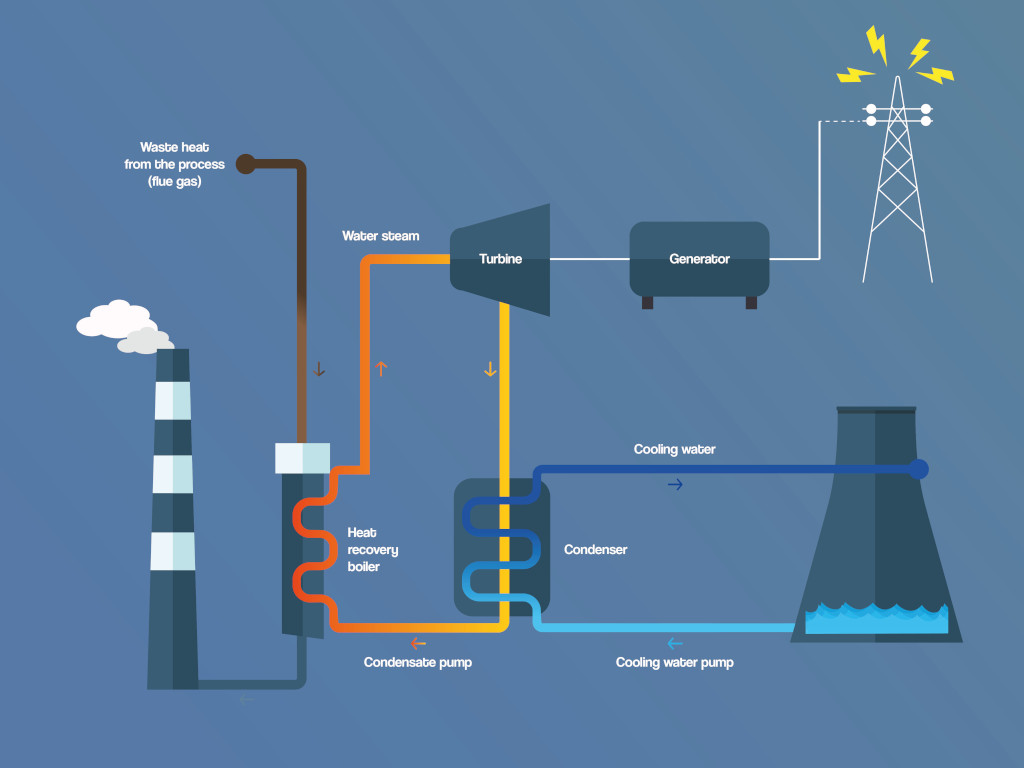Producing glass has always been associated with high energy requirements. The main reason is the comparatively inefficient glass melting process, with a relatively low energy efficiency.
A large part of the lost energy is found in the waste gas from the glass melting tanks. This is where waste heat recovery (WHR) plants come into play. They utilise the waste heat to generate electrical energy, as well as heating and cooling energy for process and air conditioning purposes. “Our patented heat recovery concept stands out from other technologies, particularly through improved efficiency without neglecting the plant reliability of a flat or container glass line” says Dennis Schattauer, Managing Director of GFT GmbH. The WHR solution from Grenzebach and CNUD EFCO GFT contributes in particular to achieving climate targets, resource conservation and cost efficiency, three of the fundamental challenges in the glass industry.
CO2 pricing will increase
With the use of the WHR system, the energy efficiency in production increases and the climate balance is improved. The avoidance of CO2 emissions and the reduced purchase of electricity and fossil fuels has a significant effect on cost reduction. “Especially in view of the European Green Deal, companies should act now to sustainably improve their climate balance” Dennis Schattauer emphasises.
The European Union’s Green Deal sets the goal of climate neutrality for all 27 member states by 2050. In achieving this goal, a significantly higher CO2 price can be expected. The requirements for the energy efficiency of production facilities will continue to increase. Companies in the glass industry will have to make efforts beyond the voluntary commitment to save more than 20% of CO2 emissions by 2030.
High energy efficiency and power generation
Based on controlled and proven technology, waste heat recovery plants enable improvements in energy efficiency and the reduction of resource consumption. The solution from Grenzebach and CNUD EFCO GFT stands out due to its particularly high efficiency for power generation, which can be 35% or more. The WHR system uses the available thermal energy in the melting tank exhaust gas to produce steam at pressures up to 90 bar by integrating heat exchanger boiler systems into the exhaust gas flow. The steam is fed to the highly efficient turbine/generator unit to generate electrical energy. “The WHR technology is a solid solution we can contribute to the glass industry with the combined competencies of Grenzebach and CNUD EFCO GFT” says Egbert Wenninger, Senior Vice President Business Unit Glass at Grenzebach. “Customers benefit from the fact that we now work with integrated knowhow from the hot and cold areas of flat glass lines. A particular focus is on energy efficiency.”
Proven technology from power plant construction
The Grenzebach and CNUD EFCO GFT waste heat recovery systems are exclusively equipped with proven technology from power plant construction. The design is based on many years of experience and proven computer-aided simulation programmes. The WHR solutions show a performance with guaranteed efficiency, net energy generation and plant availability. Many years of comprehensive knowledge from the construction and operation of glass production plants are also incorporated into many detailed solutions for the optimal integration of the WHR plants. This smart integration of the WHR plants enables an additional reduction of operating costs and a lowering of investment costs for peripheral equipment.
Promoted by governments in many countries
In terms of return on investment, it should be taken into account that in many countries, the installation of WHR plants is government promoted. In the long-term, higher electricity and gas prices are to be expected, as is an increased use of CO2 certificates. “In a favourable environment, a corresponding plant pays for itself within three to four years” Dennis Schattauer explains. The benefits of the system will remain fully intact, even if natural gas is substituted by hydrogen as the primary energy input. “Those who operate their production line with hydrogen in the future will maintain the yield of a WHR plant” Mr Schattauer concludes.
Image: Turning waste heat into electricity: The WHR system from Grenzebach and CNUD EFCO GFT operates at the highest level of efficiency (source: CNUD EFCO GFT).


